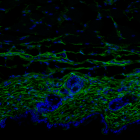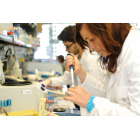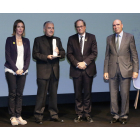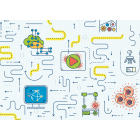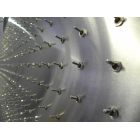 NEWS
NEWS
A study in mice done at IRB Barcelona and CNAG-CRG explains that dermal fibroblasts lose their cell identify over time and with it their capacity to produce and secrete collagen and other proteins...
ChromDesign is a new EU training network recruiting now 13 PhD candidates to investigate how the genome organizes in 3D over time and its relationship to gene regulation in health and disease.
In a perspective paper published in Nature Genetics, top researchers call for unified standards and suggest guidelines in this emerging and promising research area.
Two CRG laboratories have developed a new high-throughput screening method to detect direct biomolecule interactions. Such screening techniques are required to reveal how cellular building blocks...
The BCLL@las project has received an ERC Synergy Grant to unravel the genomics and epigenomics of chronic lymphocytic leukemia at unprecedented resolution using...
Roderic Guigó, coordinator of the CRG Bioinformatics and Genomics Programme, has been given the National Research Award.
CRG researchers have identified the mechanism by which an important enzyme involved in the differentiation of stem cells is brought to the DNA. Their results describe for the first time a new way...
The 17th CRG Annual Symposium focused on new state-of-the-art technologies that are reshaping research in biology. It covered recent discoveries, methods and technologies including single molecule...
CRG Scientists have uncovered the role of special chemical ‘tags’ in controlling vital genes involved in early mammalian development, publishing their results in Nature Genetics....
IMPACCT and MycoVAP projects both will receive ERC PoC grants to explore potential clinical applications of their recent results on breast cancer and pneumonia respectively.

